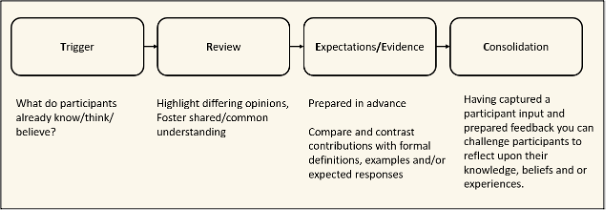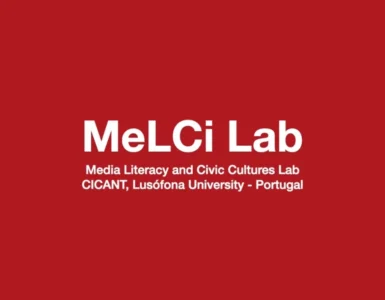The process of pivoting to online learning for many academics and higher education (HE) practitioners presented a number of challenges during the initial stages of the Covid19 pandemic. For many, it was the first time they had designed and planned curriculum for online learning and despite having a range of expertise in subject specific disciplines, some colleagues reported challenges in designing synchronous and asynchronous learning activities. In addition to this, colleagues also noted that their learners often struggled to remain engaged and at times appeared to be passive recipients of information during live sessions.
Transformational Learning
In supporting staff who were developing new curriculum, we wanted to share an Active Learning approach that could become a feature of practice across the institution. Active Learning is a broad term for a method or process of learning which places learners at its centre. It promotes active engagement and encourages learners to co-construct knowledge and make meanings about particular events and experiences. For many learners this results in deeper levels of understanding and increased confidence. We have also found that this approach has supported learners to develop their analytical skills and synthesise their ideas promoting useful transferable skills (Adams, et al 2020, Rands and Gansemer-Topf, 2017).
Our desire to support colleagues in developing active learning approaches has led to us to create a curriculum model that provides a simple, versatile, and effective process for designing, planning and delivering learning activities in a range of learning situations either face-to-face or online.
The TREC Model
In developing the TREC model we wanted to create a stimulating and active approach that realistically acknowledged and addressed the potential for learners to disengage or simply become passive recipients of knowledge during sessions. Additionally, we were keen to inspire our colleagues and empower their approach to designing active and engaging curriculum.
The TREC model is based on four key elements:

Figure 1 – Overview of TREC Model
Trigger – The aim here is to present your students with a task that requires them to think about, and articulate in some way, what they already know, understand, or believe about a topic, concept, or theme. This might be as simple as asking the group of learners a question to which everyone responds. You can ask them to write the answer down on paper or use a quizzing/polling technology to do this anonymously. You may try something more complex, for example, asking your learners to construct a definition of a particular concept. This definition can be developed by individuals or small groups and socialised as part of a broader discussion using simple post-it notes in class or a technology platform such as Digital Whiteboard or a Free Text Polling tool online. Whatever the approach the outputs are shared with the whole group of learners.
Review – Having received and shared all of the responses, the tutor is able to review the contributions with the learners. Differing opinions and common themes can be highlighted. Tutors can ask why learners have responded in a particular way and prompt further thinking and input. In this way the tutor can begin to develop shared understanding throughout the group of learners.
Expectations/Evidence – At this point the tutor can move on to comparing and contrasting the understanding that has emerged from the Review stage with pre-prepared expectations and evidence that can be sourced from wider research and literature. For example, where learners have been asked to construct their own definitions of concepts, these can be compared and contrasted with formal definitions from published sources.
Consolidation – Having worked through a process of finding out what participants already know, think, or believe, reviewing shared understanding and comparing these with evidence from published sources, tutors can subsequently challenge learners to reflect more deeply upon their initial understandings. This may involve a follow-up task to consolidate deeper understanding. For example, learners might be asked to review all of the definitions from the trigger task and vote on which they now consider to be the most accurate.
TREC IN practice
The features of this curriculum design process can be introduced at different points within a learning block or scheme of work. For example, the Trigger activity may be introduced prior to a teaching session e.g. as an online task. The outputs of the online Trigger would feed into Review and Expected/Evidence stages in the live session. Likewise, the reflective Consolidation may take place following the session as an individual or group follow-up activity. The versatility of this curriculum design process for active learning, means that it can be applied in a number of different contexts for face-to-face, fully online, and blended delivery in synchronous or asynchronous approaches.
Despite its simplicity this model has provided a useful and effective framework for tutors in developing curriculum activities and content. We are confident that the TREC model supports an Active Learning approach and provides an accessible and unambiguous planning tool relevant for educational practitioners at all levels.
Editor’s note: Rod Cullen and Orlagh McCabe will be giving a presentation on the TREC model on 6 May at the Media & Learning Online Conference. Find out more here.

Authors
Dr Rod Cullen, Senior Lecturer in Learning and Teaching Technologies at Manchester Metropolitan University, UK
Orlagh McCabe, Senior lecturer in Academic Development at Manchester Metropolitan University, UK
References
Adams, A.M, Wilson, H., Money, J., Palmer-Conn, S. & Fearn, J., 2020. ‘Student engagement with feedback and attainment: the role of academic self-efficacy’. Assessment & Evaluation in Higher Education, 45 (2), pp.317-329.
Rands, M.L. and Gansemer-Topf, A.M., 2017. ‘The room itself is active: How classroom design impacts student engagement’. Journal of Learning Spaces, 6 (1), p.26.














